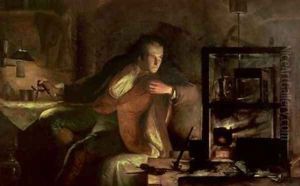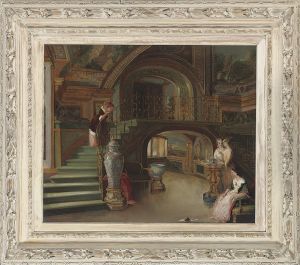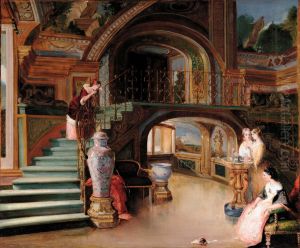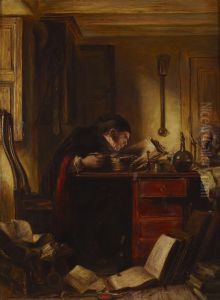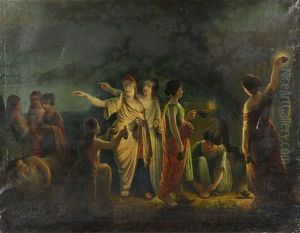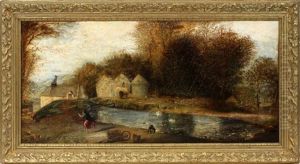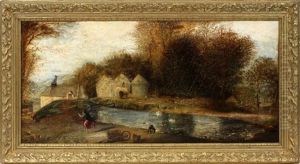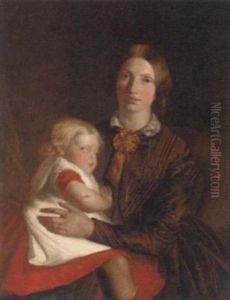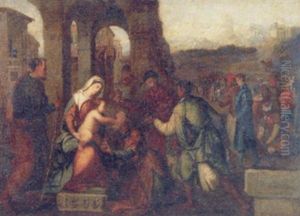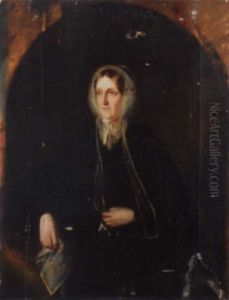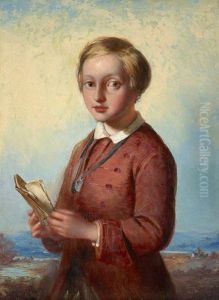James Eckford Lauder Paintings
James Eckford Lauder was a notable Scottish painter born in Edinburgh on August 15, 1811. He was the younger brother of artist Robert Scott Lauder, with whom he received his initial training before attending the Trustees’ Academy in Edinburgh. During his time at the Academy, he was a contemporary of other significant Scottish artists such as Sir William Allan, David Roberts, and Sir Daniel Macnee.
Influenced by the works of the old masters as well as contemporary art movements, Lauder went on to develop his unique style. His early works were mainly portraits and historical subjects. In 1833, he visited Italy and spent time in Rome, which had a profound impact on his art. The Italian Renaissance, especially the works of Titian and Raphael, inspired him to produce paintings with a strong emphasis on historical and religious themes.
Lauder's work received recognition through exhibitions at the Royal Scottish Academy. His painting titled 'The Trial of Effie Deans', based on Sir Walter Scott's novel 'The Heart of Midlothian', was particularly well received and helped to establish his reputation. He continued to exhibit at the Royal Scottish Academy, eventually becoming an associate member in 1838 and then a full member in 1846.
Throughout his career, Lauder balanced his artistic pursuits with teaching. He was involved in the establishment of life classes at the Royal Scottish Academy and was keenly interested in the development of art education in Scotland. Lauder’s commitment to art extended beyond painting and teaching, as he was also a vocal advocate for the arts within the broader community.
James Eckford Lauder died on December 27, 1869, in Edinburgh. His artistic legacy is marked by his dedication to historical painting and his role in shaping the artistic institutions of his time. His works can be seen as a bridge between the tradition of the old masters and the emerging styles of the 19th century, reflecting a unique Scottish perspective within the broader tapestry of European art history.
